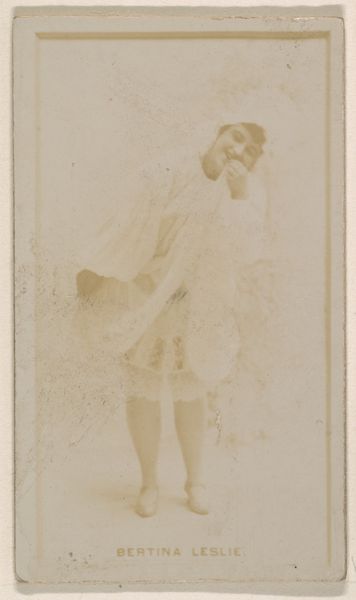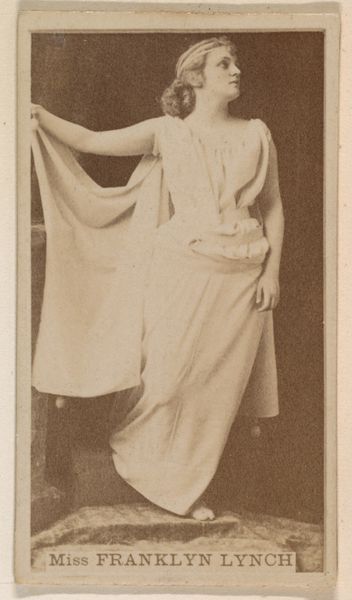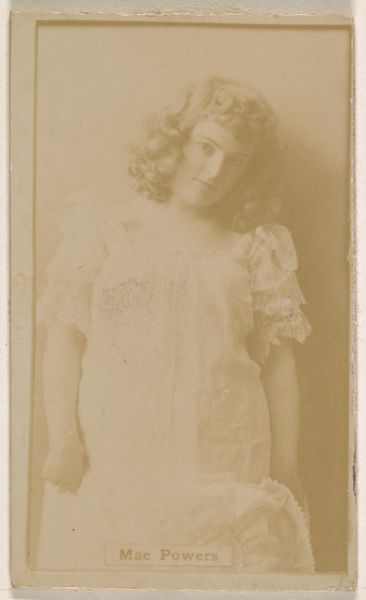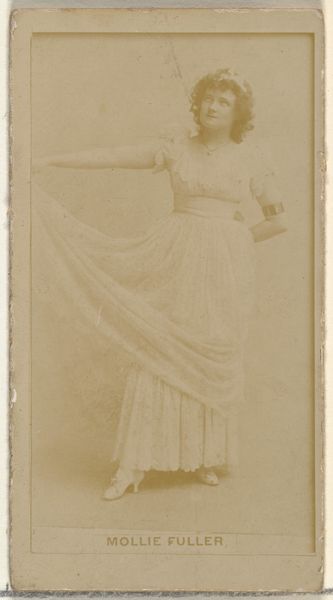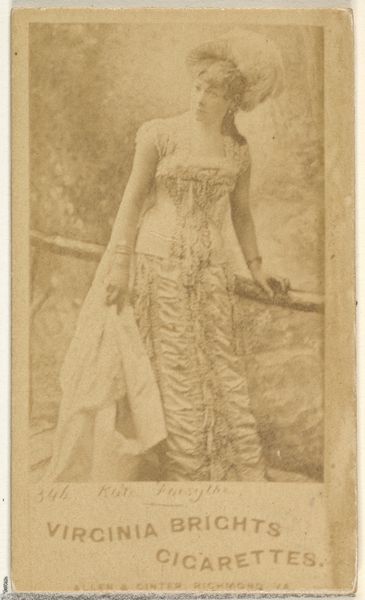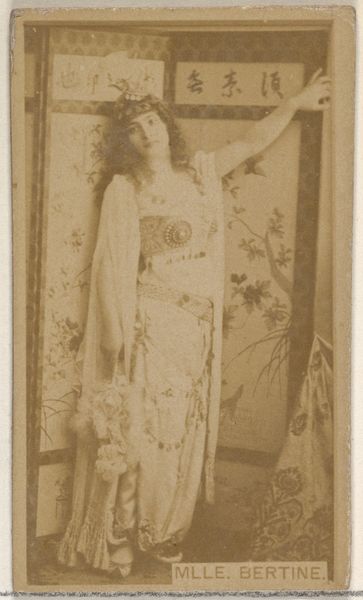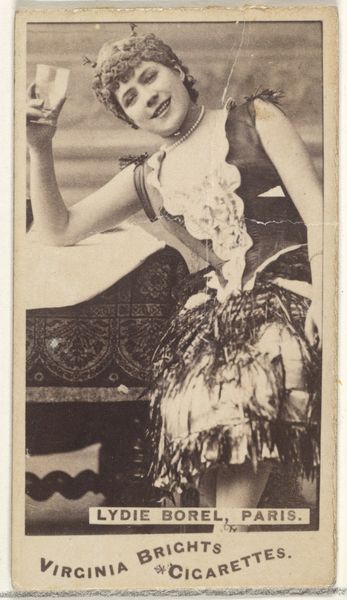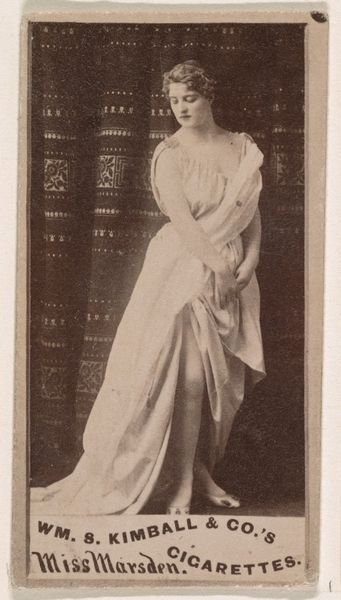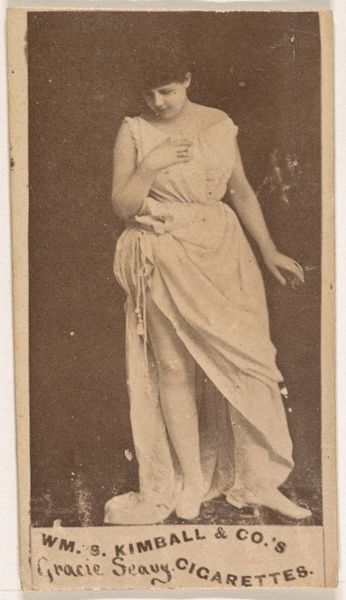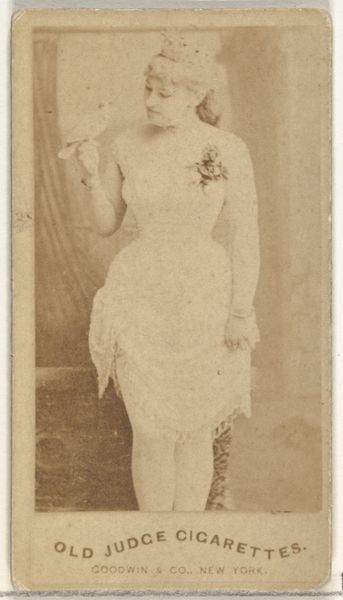
photography
#
portrait
#
art-deco
#
photography
Dimensions: height 217 mm, width 118 mm
Copyright: Rijks Museum: Open Domain
Curator: Here we have a portrait of an unknown woman, captured in a photograph sometime between 1920 and 1940. Editor: It feels glamorous, like something straight out of The Great Gatsby! The soft focus lends a dreamlike quality. Curator: Indeed. The image strongly suggests the Art Deco aesthetic prevalent during that period. We can clearly observe this in the subject’s styling. Her elegant dress, carefully coiffed hair, and decorative fan exemplify the era’s focus on sophistication. These kinds of portraits often reveal subtle performance and idealized representations of status. Editor: I wonder about this unknown woman and how photography acted as a tool to self-fashioning, where women could negotiate public image. What narratives are silenced when we focus just on aesthetics, when, perhaps, access to these sorts of portraits may not have been readily available across race and class? Curator: Absolutely. Photography during this time served various social functions, from personal mementos to markers of social identity. How an individual wanted to be seen speaks volumes about social standards and aspirations, doesn't it? I agree that the seemingly 'neutral' aesthetic judgments we apply need critical reflection on historical and cultural biases that determined what, or who, became canonized. Editor: The pose—slightly languid, self-assured—further complicates her narrative, or at least, the one she's putting forward. Is this confidence? Is this comfort with wealth? Or is it simply performing a type of expected femininity of that time? Curator: And how do we disentangle that performance from, as you said, very specific notions of femininity which were rooted in economic status and race? Looking closer, we can certainly note that while the subject and the scene evoke luxury, the artist makes use of lighting to suggest depth but does not provide the clarity one would see with studio shots meant for broad circulation. Was the image created for intimate settings rather than as propaganda? Editor: Perhaps. Overall, the image makes you wonder about the interplay between public persona, identity, and representation that photography so powerfully facilitates. Curator: And how each artifact is an active agent participating in those negotiations between aesthetics and power. Editor: It offers a portal into considering both image-making and identity construction of women from that era.
Comments
No comments
Be the first to comment and join the conversation on the ultimate creative platform.

